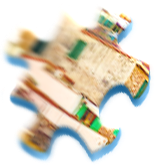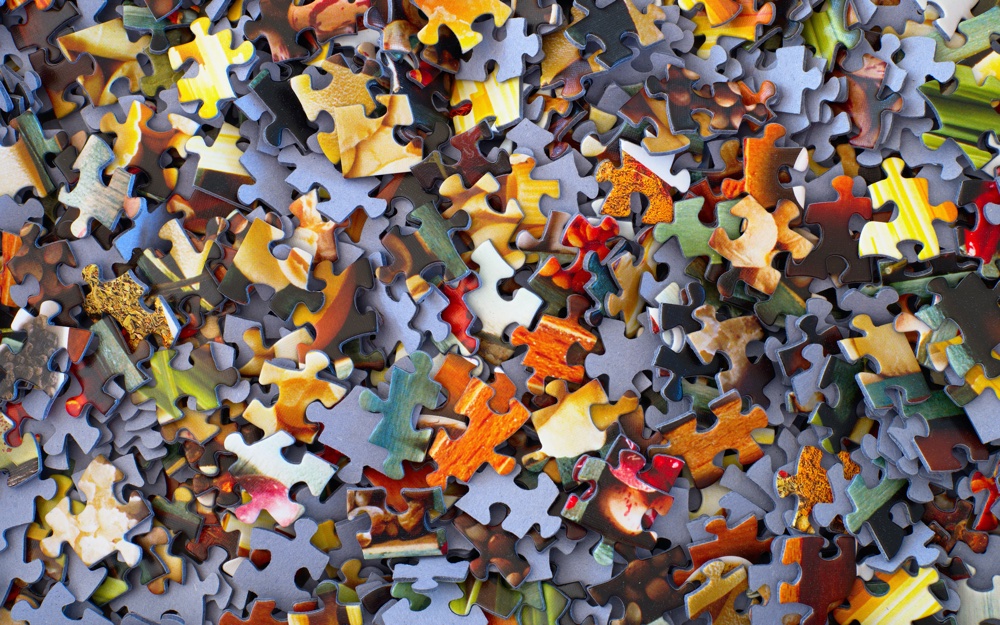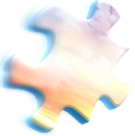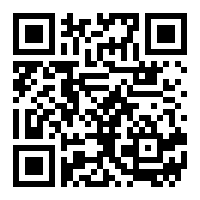Here’s a quick guide to name and history of these puzzles, and we also explain why a jigsaw puzzle is an overall good activity for you to do!
It has a universally recognisable shape, it’s considered by some people to be boring, while others think that it’s a great way of training your logic and bonding with your loved ones… We are talking about the art of doing a jigsaw puzzle, of course!
A jigsaw puzzle is usually a picture that is printed or painted on a piece of cardboard. This picture is later cut into similar jigsaw pieces. The goal is to attach each jigsaw piece into the right position, so that it fits perfectly. The puzzle is considered done when the whole picture is revealed and no jigsaw puzzle pieces are left behind.
The history of the first jigsaw puzzle
When first introduced around 1760, the first jigsaw puzzle was meant to educate people: the original jigsaw puzzle was made out of wood pieces and represented the map of Europe, and the students had to put all countries into the right spot, so that no pieces were missing and the whole map was complete.
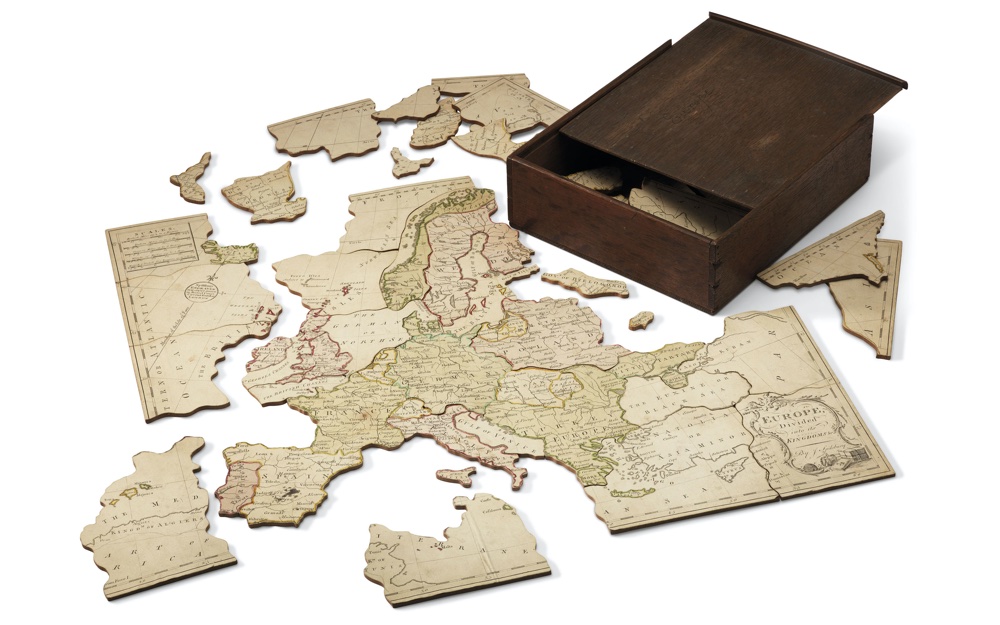
The first wooden jigsaw puzzle turned out to be so popular that the inventor, British cartographer John Spilsbury, decided to sell his puzzles to those who wanted to study geography. John made many puzzles out of wood, but the most popular ones were on eight different geographical themes: the World, Europe, Asia, Africa, America, England and Wales, Ireland, and Scotland. The business took off. After John’s death, his wife and hew new husband gave their word to continue making each jigsaw puzzle by their own.
Then the puzzle world went into the shadows and reemerged during the 20th century: puzzles were being made not out of wood, but printed on cardboard instead. They were considered to be a very easy to make and a very cheap form of entertainment, and they were used for example as one of the things that soldiers used to do when they were bored. A perfectly cut jigsaw puzzle could bring the whole room together, while also keeping everyone entertained and focused. After that, jigsaw puzzles were not only considered to be an educational tool, but also an entertaining one.
Where does the name come from?
A puzzle, basically, is a type of an intellectual game which requires for the player to think rationally and logically. The are numerous types of a puzzle, for example:
- There’s a mathematical puzzle,
- A mechanical puzzle (everyone knows Rubik’s Cube!),
- A tile puzzle,
- A jigsaw puzzle,
- Situation puzzles,
- Word puzzles,
And many, many more!
The English name “jigsaw puzzle†comes from the tool that was used to cut the pieces out — fretsaw. So when choosing a name for this form of puzzle people probably mixed up the English word jigsaw and the English word fretsaws. It’s not an uncommon thing: such a mistake that later on becomes common and is widely used everywhere is called a misnomer. For example, a head cheese is made out of meat and meat jelly, it just looks like a strange cheese. Oh, the strange English language. Don’t be confused!
Although it is still used as an educational tool, the world of perfectly cut jigsaw puzzles has grown tremendously. There are many jigsaw puzzles for everyone: jigsaw puzzles with a small number of pieces for kids, big ones for profis, plastic ones, cardboard ones, three-dimensional ones… You could also find a jigsaw puzzle shaped like rectangles, shaped like squares, circles… If you wanted to, you could do one different type of jigsaw puzzle each day! Please, help yourself, everybody will find something that he likes.
The pros of doing a jigsaw puzzle a day
Jigsaw puzzles are good for your mind, too: scientists have proven that doing a jigsaw puzzle every day helps prevent memory problems for seniors and help develop logic for kids, and since it’s a process that usually requires a lot of free time it’s best to ask your family and friends to help. Together you’ll assemble the picture that is cut into thousands of pieces much quicker.

A jigsaw puzzle also trains your logic and patience, because you have to deal with a lot of small pieces at the same time. Those jigsaw pieces can easily get lost, so please prepare your table for assembling a jigsaw puzzle picture on it by moving everything that can get in the way.
Although it’s an English invention, nowadays many people around the world adore doing jigsaws puzzles together: it’s the one activity that helps bring the family together and helps seniors stay focused and train their brain. Doing a jigsaw puzzle is a fun and universal thing to do!




